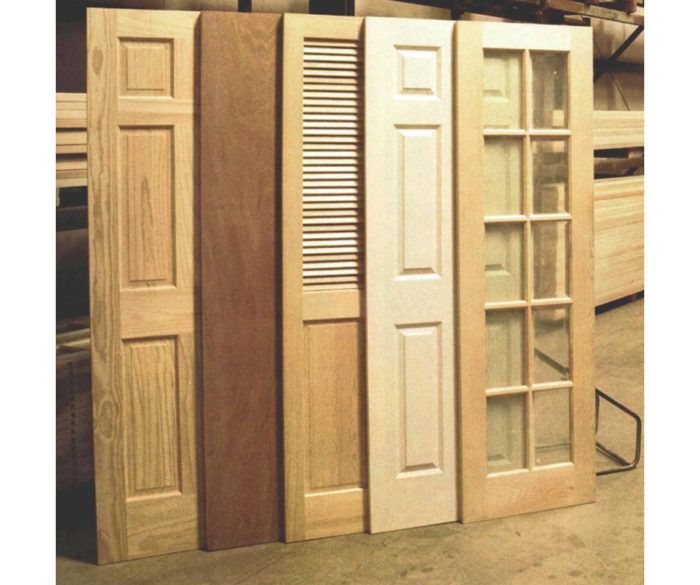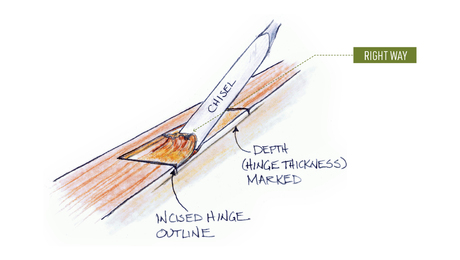Shopping for Interior Doors
There are lots of choices between expensive wooden style-and-rail and cheap hollow-core doors.

Synopsis: Interior doors come in many varieties and price ranges. This article examines the pros and cons of what you’ll find in the aisles of your local lumberyard or home center. A sidebar offers advice on options for ordering a door.
We associate doors with choices. Remember the short story called “The Lady or the Tiger”? Or Monty Hall whipping the audience into a frenzy by asking, “What’s behind door No. 3?” The most intriguing thing about a door might be what it conceals. If you’re building a house or an addition, though, you’ve got to pay attention to the door itself. What do you want from a door? Your front door keeps out the cold and other uninvited guests. Inside, doors perform a host of functions, from making a bathroom a more private place to isolating a noisy television to announcing the end of an argument. At a minimum, interior doors are large pieces of millwork and part of a room’s overall design.
When buying a door, you’ll want to know what the door is made of and how much it costs. Those of you on the lookout for a new door have to weigh the virtues of hollow vs. solid vs. stile and rail, flat panel or raised panel, veneered or solid panel, veneered and engineered composite panel or molded, and then a whole raft of wood species, among other things. To learn more about doors, I talked to manufacturers, visited their factories, talked to carpenters who install doors and finally checked prices at door retailers here in southern New England. I’ll give you a preview of what you can expect at the door store.
Wooden stile-and-rail doors are traditional and sturdy
When someone says the word “door,” I think of a stile-and-rail door made of wood. A wooden door sounds good when you rap on it with your knuckles. Its moldings and panels give the door visual depth and crisp symmetry. At 1 3⁄8-in. thickness and about 60 lb., a typical interior door has the right amount of mass to swing easily on its hinges and to stop sound from traveling room to room. But according to studies commissioned by the National Wood Window and Door Association, I’m living in the past. Wooden stile-and-rail doors now account for less than 10% of the interior doors sold annually in the United States.
Still, the stile-and-rail door has been the door of choice for hundreds of years because its frame was more stable than its predecessor, the board-and-batten door. By loosely capturing the panel (the widest and most unstable part of the door) in a rigid frame, the stile-and-rail door lets panels expand and contract seasonally without causing the door to stick or warp.
The advantages of a rigid frame still don’t overcome the wood’s natural tendency to move. The stiles and rails themselves must be made from flat, straight-grained stock that will resist meteorological temptations, and even then, doors still occasionally warp. Although you can still buy doors made of solid wood, most wood doors are made of finger-jointed and veneered stock. This construction has two distinct advantages: One, the laminated frame won’t warp as easily; and two, smaller pieces of lesser-quality wood are substituted for increasingly rare and expensive old-growth lumber.
For more photos and details, click the View PDF button below:
Fine Homebuilding Recommended Products
Fine Homebuilding receives a commission for items purchased through links on this site, including Amazon Associates and other affiliate advertising programs.

Code Check 10th Edition: An Illustrated Guide to Building a Safe House

A House Needs to Breathe...Or Does It?: An Introduction to Building Science

A Field Guide to American Houses


























